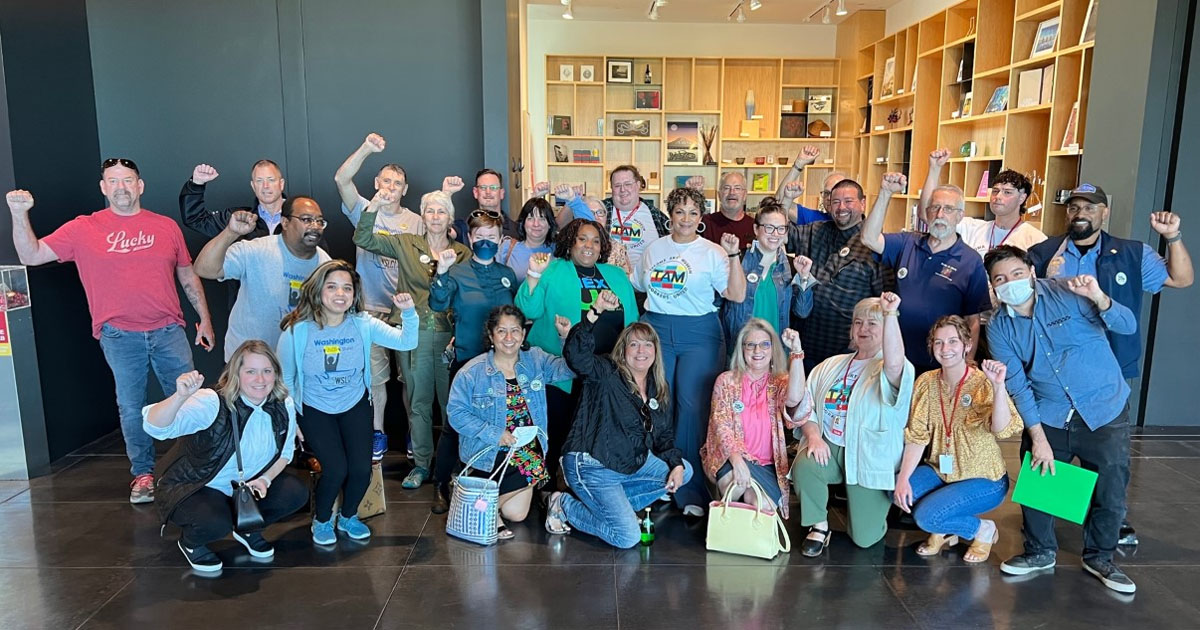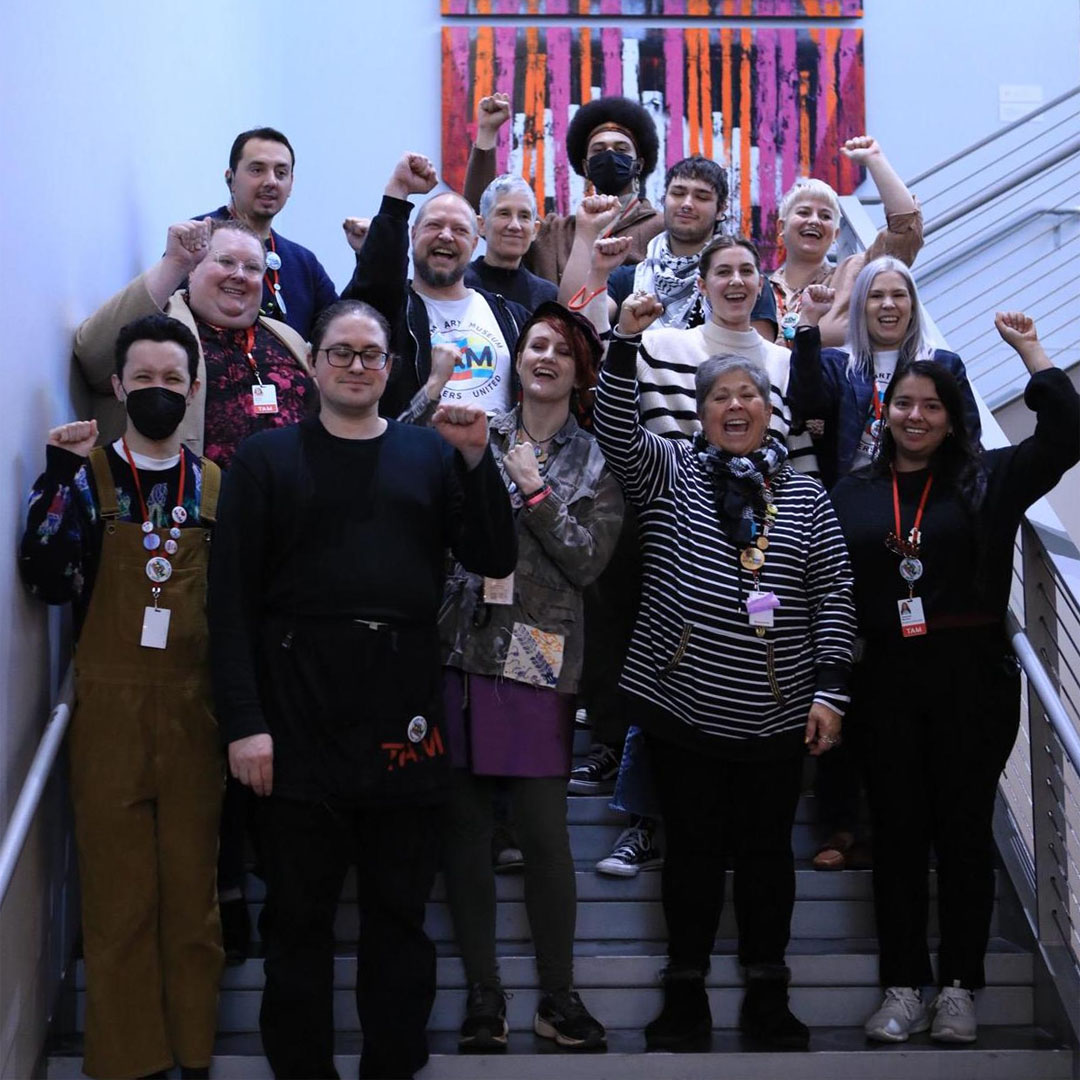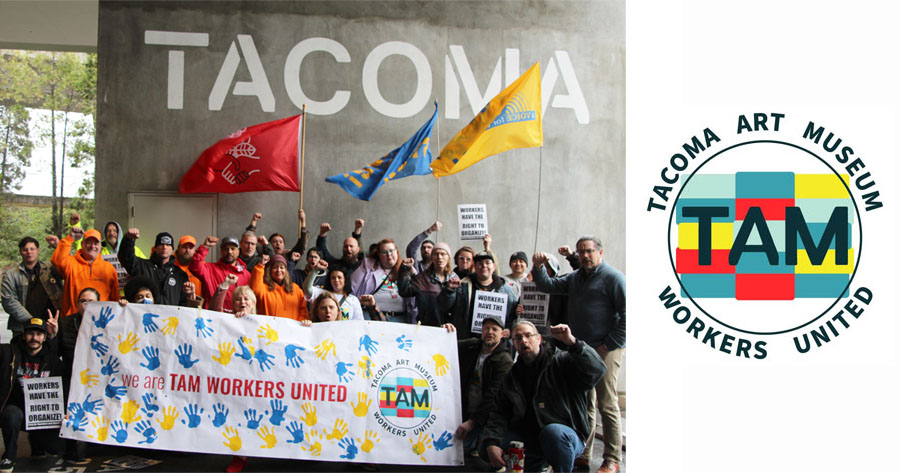LOCAL
It’s official. Tacoma Art Museum workers unionize!
The following is from AFSCME Council 28/WFSE:
TACOMA (Nov. 27, 2023) — After 12 months of fighting for their union, workers at Tacoma Art Museum voted overwhelmingly Nov. 15-16 to form Tacoma Art Museum Workers United. This year-long campaign brought workers from multiple departments together, the first museum workers union in Washington to do so. This win comes with gratitude for the overwhelming support of Pierce County labor organizers, political advocates, community groups, artists, and more.
The TAM Workers United bargaining unit now represents 26 workers.
“I’m excited to improve the culture and have DEIA representation,” said Vanessa Mercedes, a museum educator. “We need the support so we can support our community, so I’m really excited to be represented by TAMWU.”
TAM Workers United began organizing as a wave of cultural worker labor movements spread across the country. Their fight began due to inequitable conditions that were degrading to both the workers’ quality of life as well as the livelihood of the museum.
Activists at TAM began organizing in 2022 to address stagnant wages, unsafe working conditions, high turnover, and systemic inequity within the museum. They organized for the well-being of the museum itself, which had recently fallen on hard financial times, and to have an active role in decision making.
Workers believe that TAM can only live up to its mission to “inspire broader perspectives and cultivate a compassionate future” if TAM staff are treated with dignity and welcomed to contribute to those broader perspectives.
TAMWU now joins the largest cultural workers union in Washington, AFSCME Council 28/WFSE, and the largest in the nation, AFSCME, which represents 10,000 museum workers at 91 cultural institutions in the public and private sector.
They hope that their success will encourage all cultural workers in Washington to organize with WFSE, creating a powerful force to raise standards and move the industry forward.
The campaign to unionize Tacoma Art Museum campaign was notable in its broad scope and its focus on equity and diversity. TAMWU includes Visitors Services Representatives, the most diverse segment of the workforce and among the lowest paid, despite the museum’s early attempt to exclude them.
TAMWU is the first cultural workers union in Washington state to successfully organize workers across departments. Workers in customer-facing frontline positions as well as administrative staff are protected within the same agreement, providing a united front and increased solidarity throughout the entire museum.
“It was really important that this union included as many people as possible,” said Carrie Morton, TAM’s Museum Store Manager. “One of the reasons we decided to form a union is to fight for more equity as an institution. Fighting for everyone was a core tenant of us unionizing.”
Unions, elected officials, artists, community organizations, and local businesses showed an incredible outpouring of support for TAMWU, showing up at multiple rallies at the museum. Tacoma Mayor Victoria Woodards and the entire Tacoma City Council penned a letter to the TAM Board of Directors urging them to recognize TAMWU and proceed to an election.
This victory is just the beginning of TAMWU’s efforts to improve the working environment at TAM and the museum itself. Leaders within TAMWU are excited to get to work negotiating their first union contract.

The Executive Board of the Washington State Labor Council, AFL-CIO visited TAM workers in May 2023 to support their organizing efforts.
“It feels great to be a founding member of this union,” said Miles Byrd, a visitor services worker. “I’m really proud of what we were able to do, to see the community at TAM come together and see how much we care about each other. That’s made me feel really good about being here.”
TAMWU is grateful to the TAM Board for recognizing their union. With this recognition, they hope to collaborate and bargain for working conditions that ensures the museum thrives through an empowered workforce.
 AFSCME represents more cultural workers than any other union, including 10,000 museum workers at 91 cultural institutions in the public and private sector, and more than 25,000 library workers at 275 public and private libraries.
AFSCME represents more cultural workers than any other union, including 10,000 museum workers at 91 cultural institutions in the public and private sector, and more than 25,000 library workers at 275 public and private libraries.







